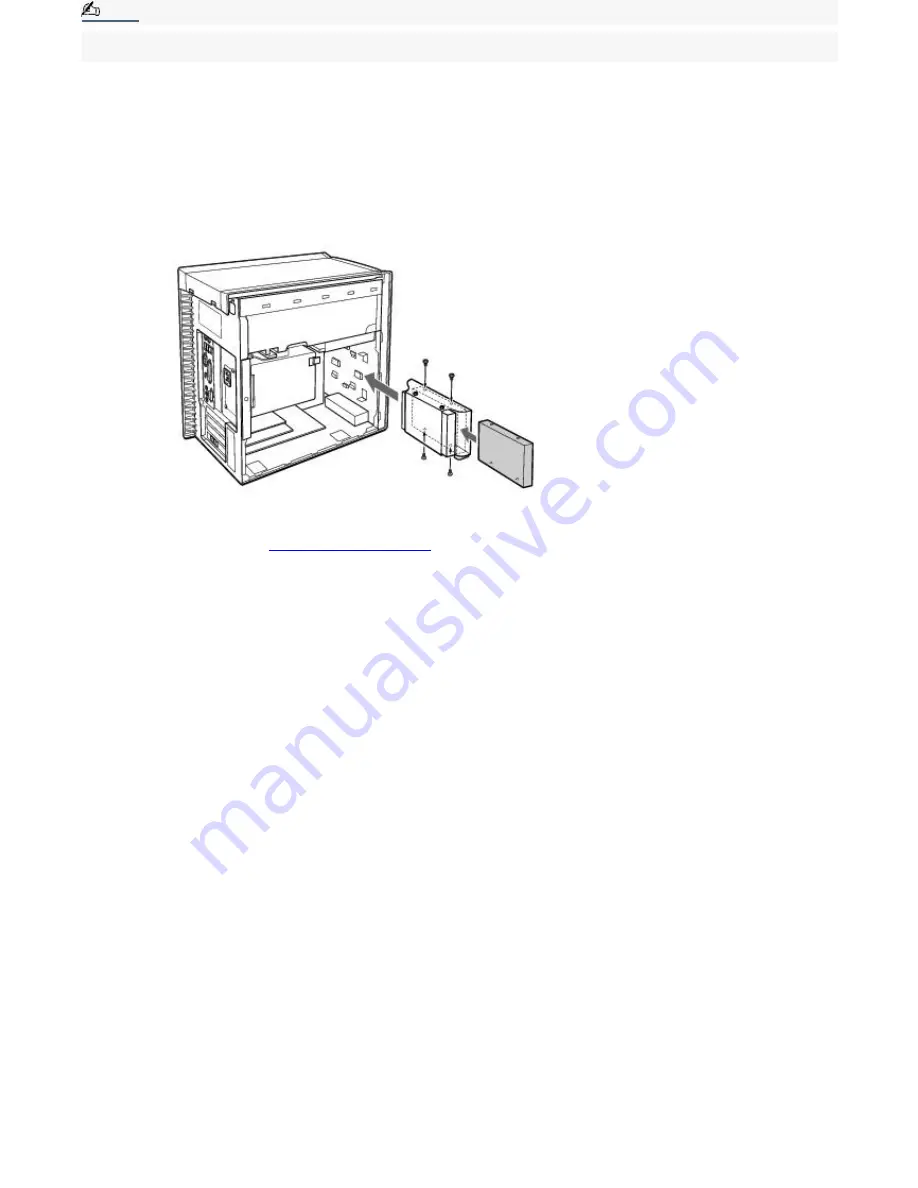
Note:
Your new hard disk drive is supplied with the necessary screws. Do not overtighten the screws when securing
the drive to the drive holder.
9.
Align the drive holder with the slots on the inside of the chassis and slide the drive holder in completely.
10.
Push up on the bottom tab of the drive holder to lock it into position.
11.
Connect the second drive connector to the new drive. Orient the connector so that pin 1, on the red side of the
ribbon cable, is aligned with pin 1 of the new drive.
12.
Connect the second power connector to the new drive. See the instructions that came with the drive.
Replacing the drive holder
13.
Replace the side cover. See
Replacing the side cover
.
14.
Reconnect the power to your computer.
To identify additional hard disk space
When you initialize the new hard disk drive, it must be configured as an extended partition in Windows NT file system
(NTFS) format.
1.
Log on in Windows
®
as Administrator.
2.
Click Start in the Windows taskbar and right-click on My Computer. A shortcut menu appears.
3.
Select Manage. The Computer Management window appears.
4.
From the file directory on the right, go to Storage and then select Disk Management.
5.
Right-click on the newly installed, unformatted drive (Disk label identified with red marking), and from the
shortcut menu, select Initialize Disk.
6.
Click on the Unallocated area of the drive and then right-click to display the shortcut menu.
7.
Select New Partition. The New Partition wizard appears.
8.
Follow the onscreen instructions to complete the process.
The Windows
®
XP operating system recognizes the new hard disk drive and applies the NTFS file system format.
Page 87
















